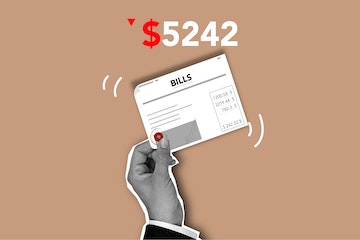How to Calculate the Break-Even Point for Your Small Business?
As a small business proprietor, comprehending the financial well-being of your enterprise is a crucial aspect of success. One crucial metric for measuring financial performance is the break-even point.
The break-even point is the number of sales or units you need to sell to cover all of your costs, including fixed and variable costs. By calculating the break-even point, you can determine the minimum amount of sales necessary to keep your business running and to turn a profit.
In this article, we’ll guide you through calculating the break-even point for your small business.
Understanding Fixed and Variable Costs
The calculation of the break-even point begins with a clear understanding of fixed and variable costs. Fixed costs are those expenses that remain constant, regardless of the production level. Examples of such costs include rent, insurance premiums, and salaries.
In contrast, variable costs are expenses that change with the production level, such as materials, supplies, and labor.
Calculating the Break-Even Point
To calculate the break-even point, you’ll need to add up all of your fixed costs and divide that number by your average profit per unit, which is calculated by subtracting your variable expenses from your selling price per unit. The formula for calculating the break-even point is:
Break-Even Point = Fixed Costs / (Selling Price – Variable Costs)
For example, let’s say your small business has fixed costs of $10,000 and your average variable costs are $5 per unit. If you sell each unit for $20, your average profit per unit would be $15 ($20 selling price – $5 variable costs). To calculate the break-even point, divide your fixed costs ($10,000) by your average profit per unit ($15), which would result in a break-even point of 666.67 units.
Example 1: A Retail Business
Let’s say you own a retail store that sells handbags. The average cost of each handbag is $50, and you sell each one for $100. Your monthly fixed costs (rent, utilities, etc.) are $10,000.
To calculate your break-even point, we’ll start by finding the number of handbags you need to sell each month to cover your fixed costs:
$10,000 ÷ ($100 - $50) = 200 handbags
So, in order to break even each month, you need to sell at least 200 handbags.
Example 2: A Service Business
Let’s say you run a web design business. You charge an average of $2,000 per project, and your fixed monthly costs are $8,000.
To find your break-even point, we’ll use the same formula as before:
$8,000 ÷ ($2,000) = 4 projects
In this case, you need to complete 4 projects each month in order to break even.
Example 3: A Product-Based Business
Let’s say you run a business that sells a product for $100, and the average cost to produce each product is $70. Your monthly fixed costs are $12,000.
To find your break-even point, we’ll use the same formula as before:
$12,000 ÷ ($100 - $70) = 240 products
So, in order to break even each month, you need to sell at least 240 products.
Understanding the Break-Even Point
It is crucial to comprehend that the break-even point is not an end goal but a fundamental benchmark. It serves as a starting point from which the business can measure its progress and make informed decisions for growth and sustainability.
The break-even point represents the minimum amount of sales necessary to keep your business running and to turn a profit. To turn a profit, you’ll need to sell more units than your break-even point.
Additionally, you’ll need to continuously monitor your fixed and variable costs and adjust your prices accordingly to ensure that you’re still making a profit even as your costs change over time.
Tips for Improving Your Break-Even Point
There are several strategies you can use to improve your break-even point and ensure the financial stability of your small business.
- Reduce your fixed costs: Look for ways to reduce your fixed costs, such as negotiating lower rent or reducing insurance costs.
- Increase your selling price: By increasing your selling price, you can increase your average profit per unit and lower your break-even point.
- Reduce your variable costs: Minimize variable costs to boost profitability. For example, you can source cheaper suppliers and reduce waste.
- Increase your sales volume: By increasing your sales volume, you can spread your fixed costs over a larger number of units, which will lower your break-even point.
Conclusion
The break-even point is an important metric for measuring the financial performance of your small business. By understanding the difference between fixed and variable costs, calculating the break-even point, and implementing strategies to improve your break-even point, you can ensure the financial stability of your business and increase your chances of success.
